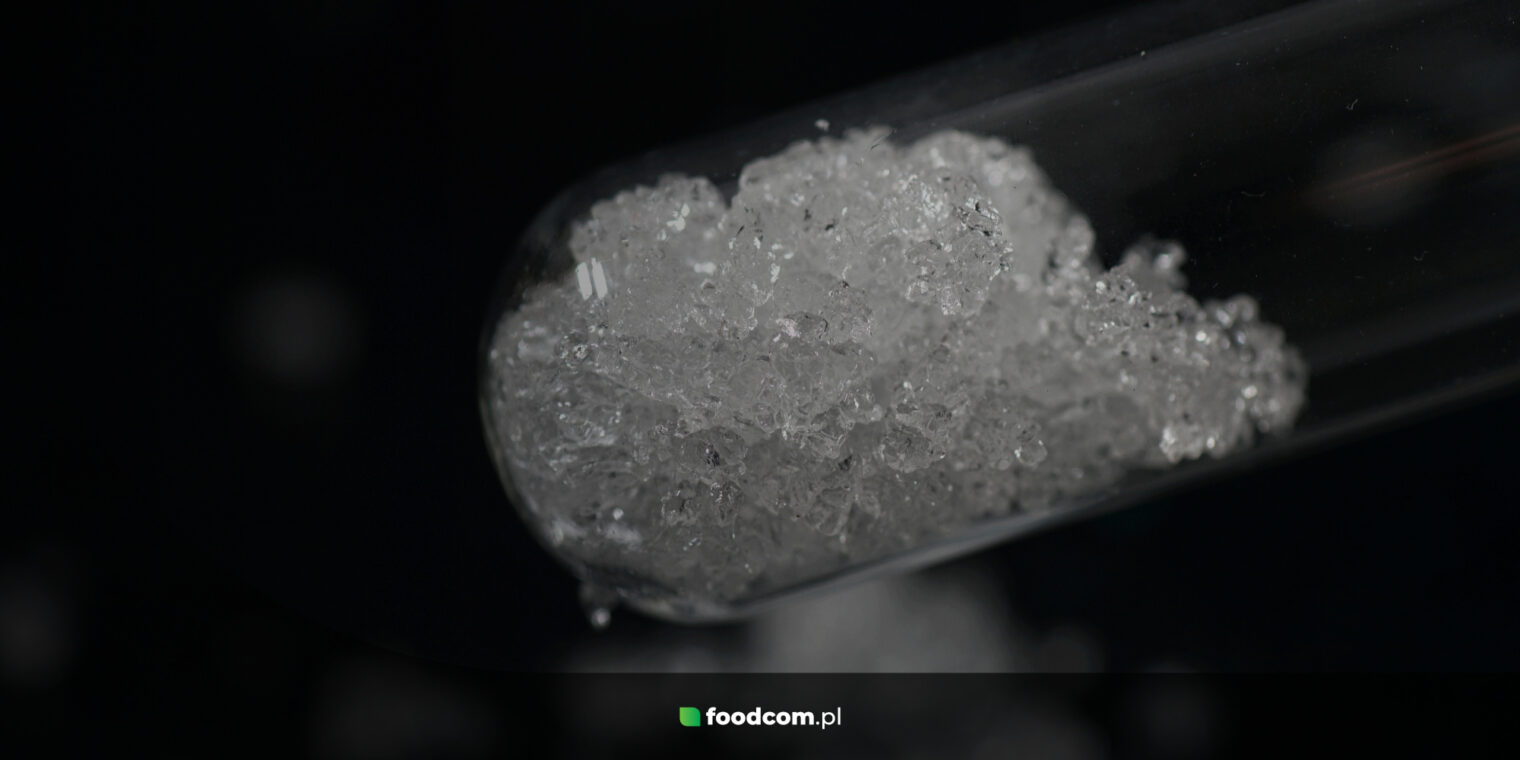- Flocculation and coagulation are processes that allow for the precipitation of fine particles suspended in a mixture, such as pollution particles.
- These phenomena are used in the purification of sewage, mixtures, or water, as well as in production processes.
- Both inorganic and organic compounds are used as coagulants and flocculants.
- In the processes of coagulation and flocculation, the selection of the appropriate chemical substance facilitating these phenomena, as well as setting specific process conditions, is important.
In the processes of coagulation and flocculation, the selection of the appropriate chemical substance facilitating these phenomena, as well as setting specific process conditions, is important.
Flocculation and coagulation are phenomena that are used, among others, in water purification processes. They allow for the combination of suspended particles in water into larger aggregates, making it possible to precipitate and filter them out. Learn how these processes work, how they differ, and what chemical compounds are used as coagulants and flocculants.
What are water coagulation and flocculation?
Coagulation and flocculation processes are applied in suspensions and colloids, i.e., systems where one substance is dispersed in another. Coagulation allows for the precipitation of one of these compounds in the form of aggregates forming a continuous phase. This could be sediments, gel, or paste. Flocculation, on the other hand, allows these aggregates, i.e., clumped solid particles, to combine into even larger structures, which can be easily removed from the solution. Both processes are used in sewage treatment, where sewage is subjected to them after preliminary mechanical cleaning. Coagulation and the subsequent flocculation constitute chemical methods of water purification, enabling the removal of larger pollution particles through filtration or sedimentation.
What is the mechanism of coagulation and flocculation?
The phenomenon of coagulation can be induced by adding certain chemical compounds, such as electrolytes or fillers, as well as by temperature and other external factors, e.g., pH, which accelerate particle movement and facilitate their collision. Therefore, the process of coagulation is supported by mixing, spinning, and acting on the mixture with ultrasound.
During coagulation, the destabilization of pollution particles occurs, leading to their combination into so-called microaggregates. Coagulants, substances stimulating the aggregation of fine particles, often aim to adsorb to their surface and neutralize their negative surface charge, which impedes the combination of particles and the formation of sediment. The resulting microaggregates are still not very visible to the naked eye, and the formed sediment is dispersed.
To facilitate the precipitation and sedimentation of sediment or the creation of larger aggregates for their capture and effective filtration, the process of flocculation is subsequently applied. Flocculants, which facilitate this phenomenon, support the merging of microaggregates into larger structures. Often called “flocs,” these are visible to the naked eye and more easily precipitate as sediment, hence can be captured by filters. Flocculants are often polymeric substances that adsorb coagulant particles, modify the properties of its surface, stimulate the approximation of particles, fill the gaps between them, and through chemical bonds, usually hydrogen bonds, form macroaggregates. These structures are usually visible to the naked eye and loosely packed, easily breaking apart under the influence of strong mixing. An example of natural flocculation is the combination of snowflakes into larger forms.
What compounds are used as flocculants and coagulants?
Inorganic coagulants most commonly used are trivalent cations, such as iron or aluminum compounds. They are much more effective in stimulating coagulation than divalent ions. When using them, it is important to ensure the appropriate pH of the solution by adding acid or base. For iron ions, the optimal pH is above 5, and for aluminum ions – between 6 and 7.4. Sometimes organic coagulants are also used – cationic polyelectrolytes, whose advantage is a significantly smaller amount of resulting sediment.
Flocculants used are polymeric compounds. These can be organic compounds (e.g., gelatin or starch), inorganic (e.g., activated silica), as well as synthetic, like polyacrylamides, polyethylene oxide, or polyvinyl alcohol. The selection of the appropriate flocculant depends on the desired effect. Anionic flocculants are used for suspensions with an alkaline or neutral reaction, whereas cationic ones – for those with an acidic reaction. The use of synthetic flocculants allows for reducing the amount of sediment and its consolidation.
What to consider when conducting coagulation and flocculation?
When using coagulation and flocculation in technological processes, it is important to not only select the appropriate chemical compound for the process but also to consider a number of other important factors. The efficiency and effectiveness of the process, which requires proper optimization, are crucial. It is necessary to choose not only the right type of coagulant or flocculant but also its concentration. It matters what type of solid particles are present in the solution, their size, number, and concentration. In the process of coagulation and flocculation, the speed of dosing coagulants and flocculants, temperature, and mixing intensity are also important. Slow mixing supports these processes, whereas too intense mixing may lead to the disintegration of aggregates formed as a result of flocculation. It is also necessary to plan the process of removing the coagulant or flocculant from the final product. Various types of coagulants and flocculants can be found at the Foodcom store along with other additives used in technological processes. This allows you to select the appropriate compounds for the application you are interested in.
Applications of flocculants and coagulants
Coagulation and flocculation are applied in many technological processes where it is necessary to purify or clarify a solution, as well as to obtain a specific colloidal mixture. The main application of these processes is sewage treatment through the precipitation of sediments.
Sewage treatment and water purification
In the sewage treatment process, coagulation and flocculation play an important role in precipitating and filtering out suspended pollution particles. They are also used to purify swimming pool water and for its clarification, often along with sodium hypochlorite used for water disinfection. Coagulants and flocculants can also be applied in purifying water from paint or varnish residues, which precipitate on the water surface, allowing for their easy filtration.
Biotechnology and pharmacology
Coagulation and flocculation processes are widely used in biotechnological processes, e.g., in the production of biopharmaceuticals. They are used, among other things, to separate the cell mass of microorganisms producing active substances from the products of their metabolism and resulting impurities. In many products, flocculation also allows for the separation of individual compounds. Flocculation is also applied in laboratory diagnostics, especially in blood plasma studies.
Other technological processes
Flocculation is widely used in biotechnology, the pulp and paper industry, the food industry, as well as in mining, metallurgical, and oil industries. This process is also used in other technological processes where it is necessary to isolate particles present in a colloidal form, such as removing emulsions, suspensions, or metals. In metallurgy, coagulation and flocculation processes enable the selective precipitation of individual metals, facilitating their recovery. The phenomenon of coagulation is also applied in the production of polymers, plastics, or paints. Coagulation can also lead to the formation of various pastes and gels, as well as solid materials, which are applied, for example, in construction (production of concrete or cement) and in the production of ceramics. Coagulation of proteins, on the other hand, is used in the dairy industry for the production of yogurts, as well as in the production of cheeses or in brewing. In papermaking, flocculation enables the dewatering of the product and the combination of cellulose fibers with additives, resulting in the production of paper.
As we can see, coagulation and flocculation processes are widely used in many different areas – both for purifying mixtures, products, sewage, and water, as well as in production in the food industry, biotechnology, metallurgy, papermaking, and medicine. In each case, it is important to have a good understanding of the mixture that is to be subjected to the coagulation or flocculation process, as well as to properly select the compound used and the process conditions.








